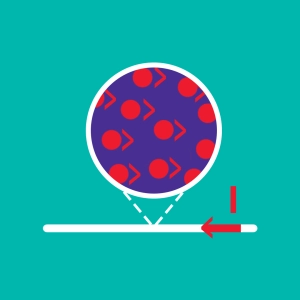 Electric current
Electric current
Do not confuse instantaneous velocity (thermal agitation in km/s) and mean velocity of free moving charges (conduction current in mm/s).The resistance of a conductor stems from the numerous collisions taking place in it. These collisions are also at the origin of the heating effects known as the “Joule Effect”.
By convention, current moves from the positive pole to the negative pole. The electrons move in the opposite direction.
Click on the connectors to switch them on/off.
